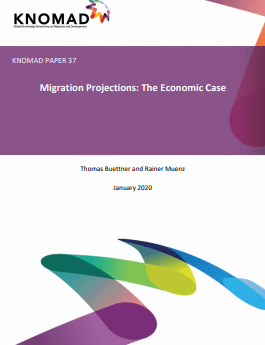
Migration Projections: The Economic Case
This paper adds an economic dimension to the projection of international migration flows. Using existing estimates of international migration flows and demographic projections from the United Nations, the paper analyzes the impact of economic development, expressed as gross domestic product (GDP) per capita, on international migration. The analysis was inspired by the migration transition hypothesis – also known as the “migration hump” theory – and confirmed ahypothesized nonlinear relationship between migration and GDP per capita. Despite the large variability of the data, nonparametric fits suggest that emigration rates are relatively low in low-income settings, rise with rising GDP per capita, and decline at high income levels. On the other hand, immigration rates seem to increase unabated with rising income levels. For the projection of international migration flows, the nonparametric curves were parametrized by logistic and bi-logistic functions. Migration projections for 183 countries with constant emigration rates and with migration rates augmented by (projected) GDP per capita were calculated and the results summarized. The results show that international migration flows might substantially increasing when countries pass from low- to high-income economies. The paper also considers possible interactions between labor force dynamics and international migration but finds insufficient evidence for the formal integration of employment dynamics into the formulation of assumptions of international migration. Labor force projections driven by demographic change and projections of labor force participation rates are calculated for 184 countries and summarized. This paper provides strong evidence that economic dynamics should be considered into the formulation of assumption for future trends of international migration.

